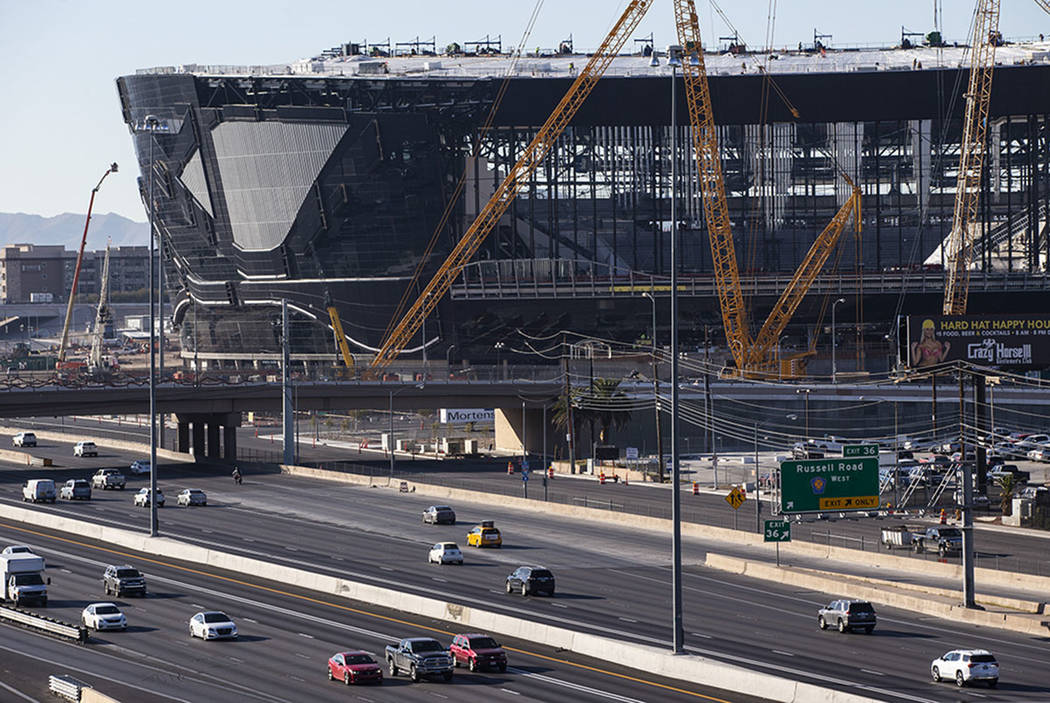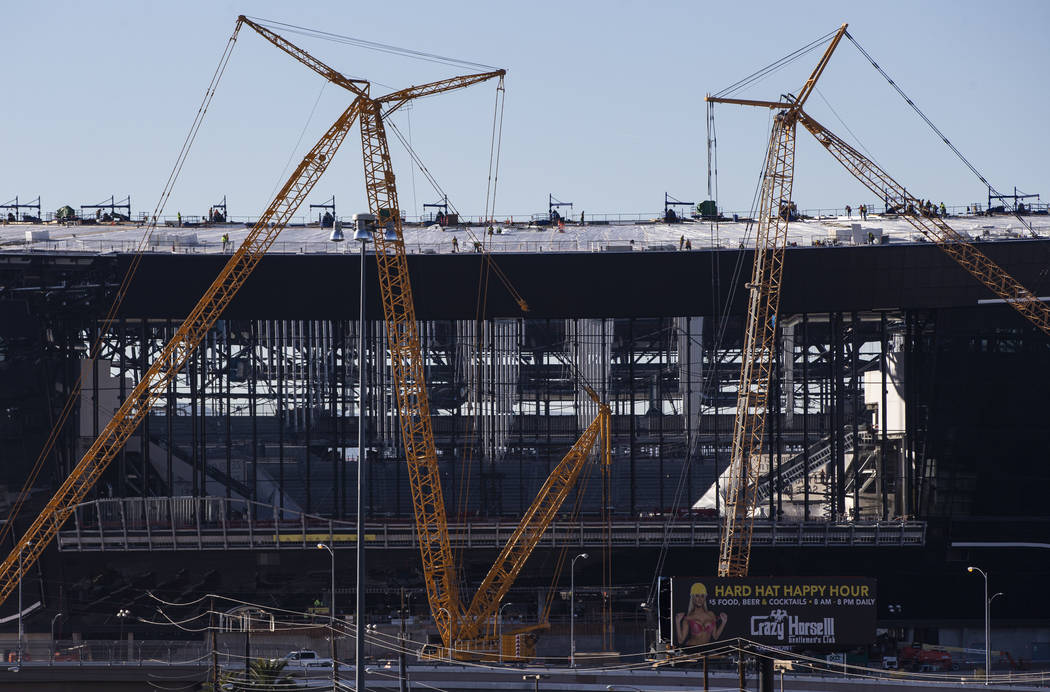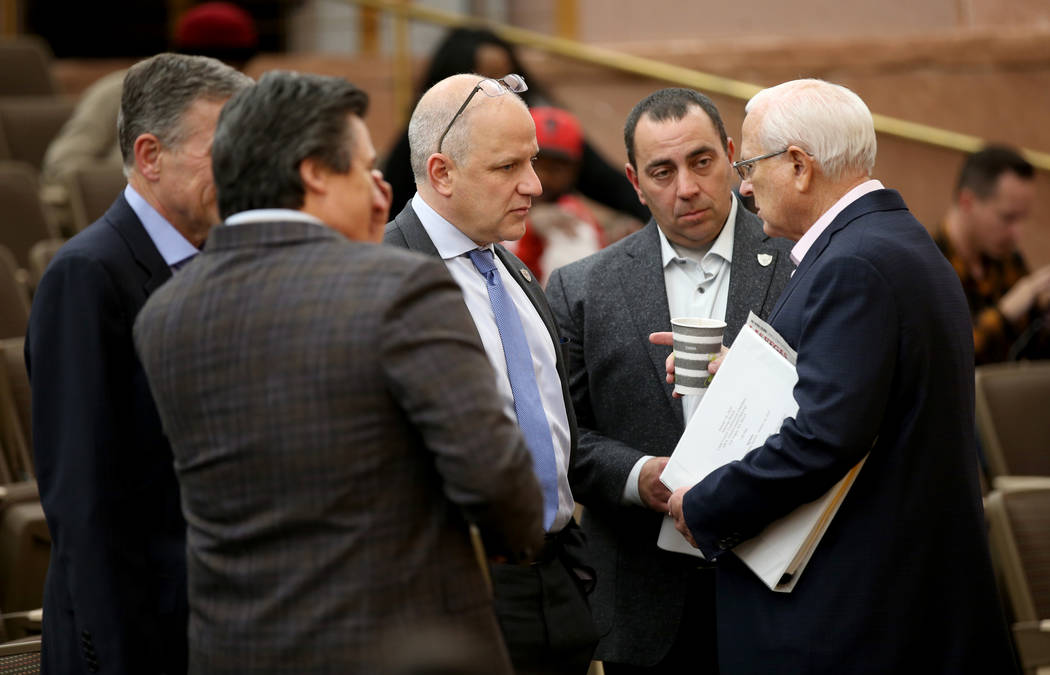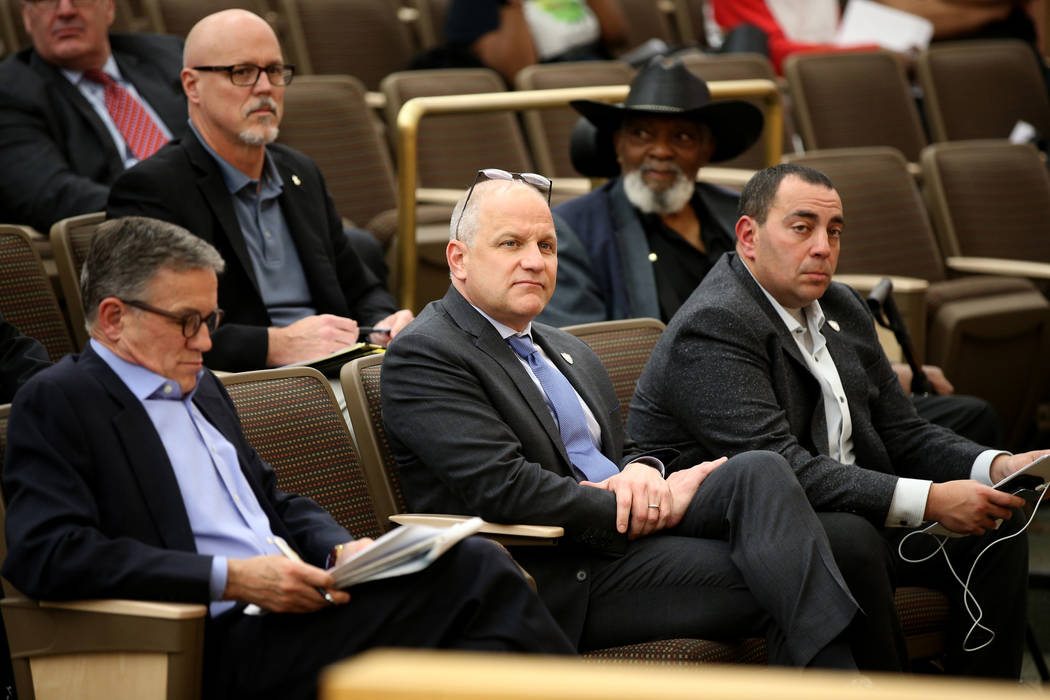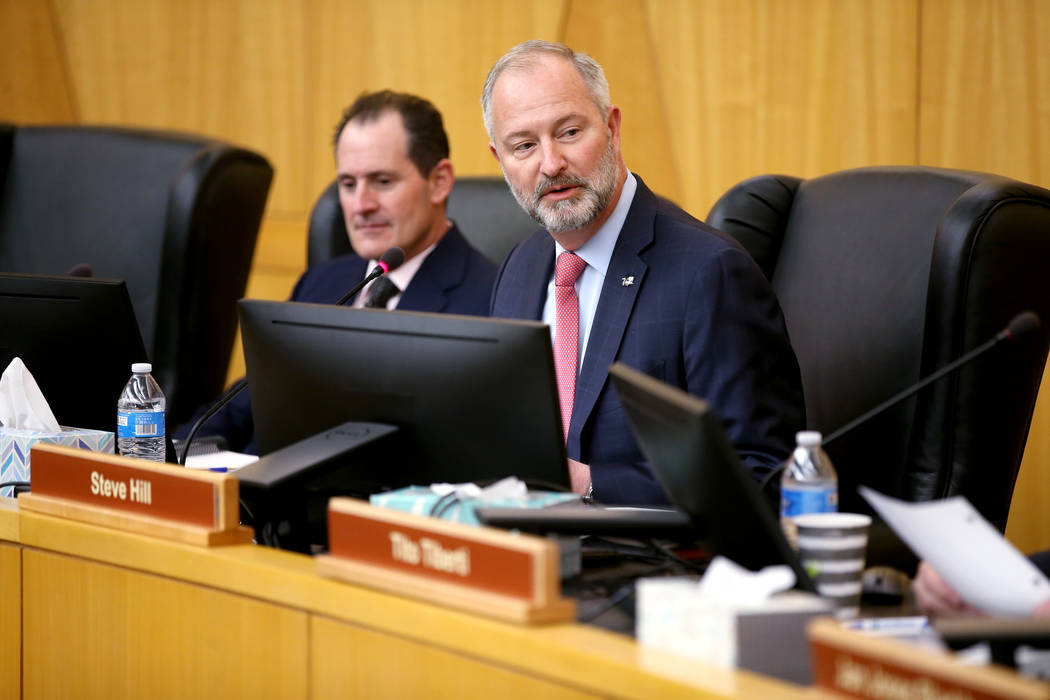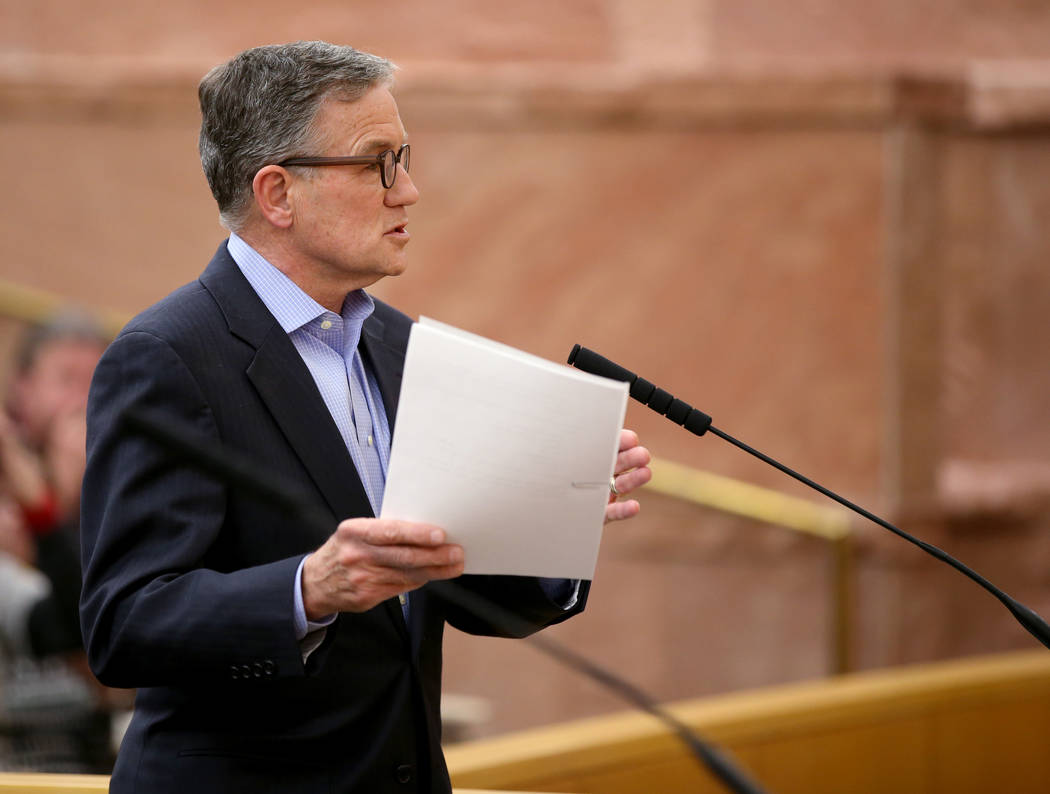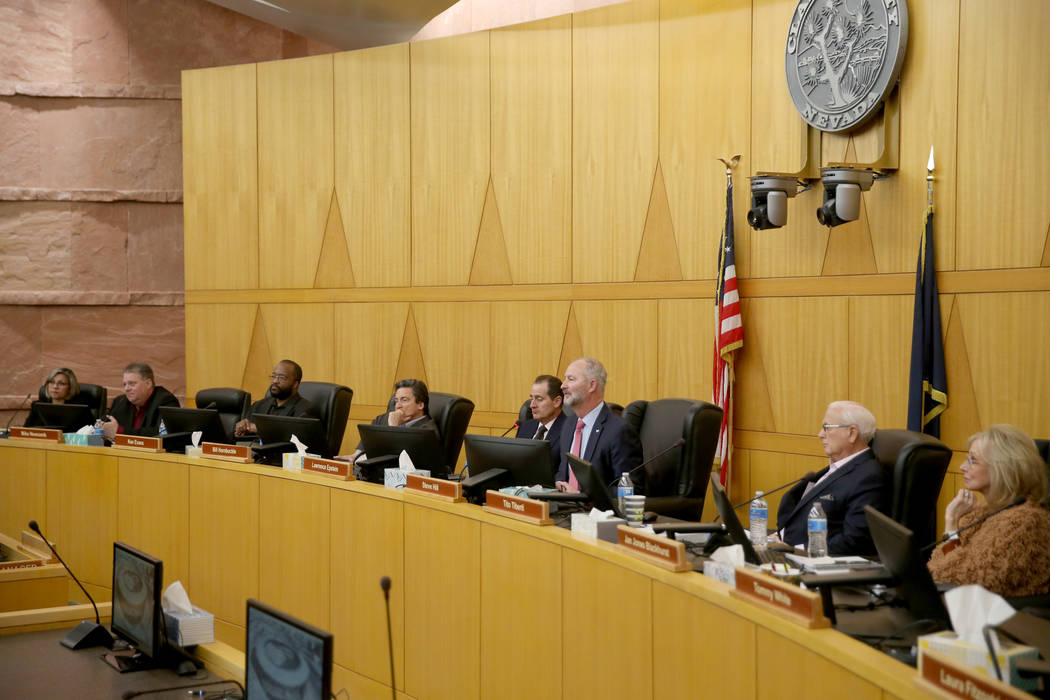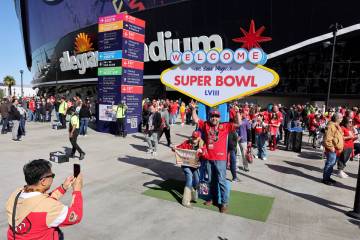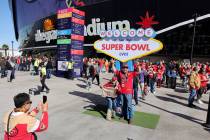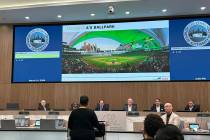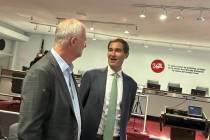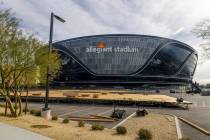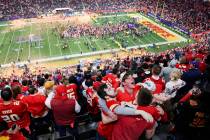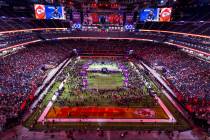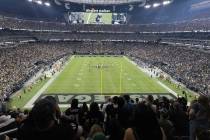Raiders tell authority board Allegiant Stadium will open on time
An executive for the Raiders subsidiary building the $2 billion Allegiant Stadium told the Las Vegas Stadium Authority board Thursday that the 65,000-seat indoor football stadium will be completed on time.
Don Webb, chief operating officer of StadCo, the team subsidiary supervising general contractor Mortenson-McCarthy Joint Venture, said the company has never missed an opening-day commitment.
“Mortenson has extensive experience in constructing major sports and entertainment facilities. U.S. Bank Stadium, where the Vikings call home. SunTrust Park, home of the Atlanta Braves. Target Field. Coors Field. TCF Bank Stadium. FedEx Forum, and many other stadiums that have been successfully completed on time by them,” Webb said at the close of a 15-minute explanation of a delay in the installation of the stadium’s roof.
None of the eight board members present at the meeting asked Webb any questions after his presentation.
“Mortenson has never failed to complete a sports facility on time,” he said of the Minneapolis-based contractor, the lead developer. “Allegiant Stadium will not be their first failure because Allegiant Stadium will be completed on time.”
Webb said that the stadium, about 80 percent completed, has 2,000 craftsmen working on the site and that extra weekend shifts have been added to assure the Raiders can take possession of the building on July 31.
Webb said because the stadium “is an enormous high-profile project with unprecedented public scrutiny, any construction hiccup becomes exaggerated throughout social media and the press.”
Webb then spelled out what went wrong with the installation of the translucent durable-plastic roof — a project builders began last summer and pushed back multiple times with a mid-May completion now anticipated.
“As the stainless steel cabling grid was being hoisted into place and attached to the circumferential compression ring formed by the steel canopy roof, one of the connections was overstressed and resulted in a handful of bolts holding one of the more than 100 joints in the lower portion of that canopy to break,” he said. “Bear in mind that we’re talking about a handful of bolts that has more than a half-million similar bolts. No one was injured, and the structure was never in jeopardy of failure.”
Webb said that he took the precaution of having a metallurgic analysis completed on bolts and Mortenson-McCarthy crews made the effort to replace 1,700 similar bolts despite them holding joints in place without incident.
Five engineering firms analyzed the problem and modeled conditions to determine there were no defects. The revised roof installation, reviewed by Clark County inspectors, will involve the use of additional cranes.
“It’s worthwhile to note that the forces imposed on the compression ring by the cables is at their very maximum during the installation process and these forces significantly decrease once the system is fully in place,” he said.
Webb indicated there are 850,000 pounds of force at maximum stress.
He said the contractor and its subcontractors have taken responsibility for any added costs associated with materials and delays.
“Mortenson-McCarthy and their subcontractors own all of the cost impacts associated with the installation of the cable net and the EFTE roof,” Webb said. “This includes any cost arising out of the incidental damages to the building, including rain, and any costs associated with resequencing or accelerating the schedule in order to meet the completion date. Neither StadCo nor especially the Stadium Authority have any liability for costs arriving out of the cable net delay.”
And Webb expects any rain damage to be minimal. He said damage occurring from December rainfall — which fell at about twice the normal average — was about $100,000 or 0.00005 percent of the total cost.
In a report filed before the meeting, Las Vegas-based Grand Canyon Development Partners said rain damage could delay the stadium’s opening. But project executive Tony Cosentino told the board Thursday that it was unlikely rain damage would prevent the building from being completed by July 31.
With the steel canopy roof that surrounds the translucent portion and glass walls along the side of the stadium, he expects little to no damage before the building is sealed.
Because contractors initially believed the building would be sealed by mid-April, they’re considering the bottom-line delay to be about 35 days, a span of time Webb said should be mitigated with the resequencing of the schedule.
The nine-member Las Vegas Stadium Authority board oversees finances and policies for the stadium, which is paid for in part with $750 million in bonds secured by a 0.88 percentage-point increase in Clark County’s variable hotel room tax, which ranges from 10 percent to 13 percent based on the lodging.
Contact Richard N. Velotta at rvelotta@reviewjournal.com or 702-477-3893. Follow @RickVelotta on Twitter.



